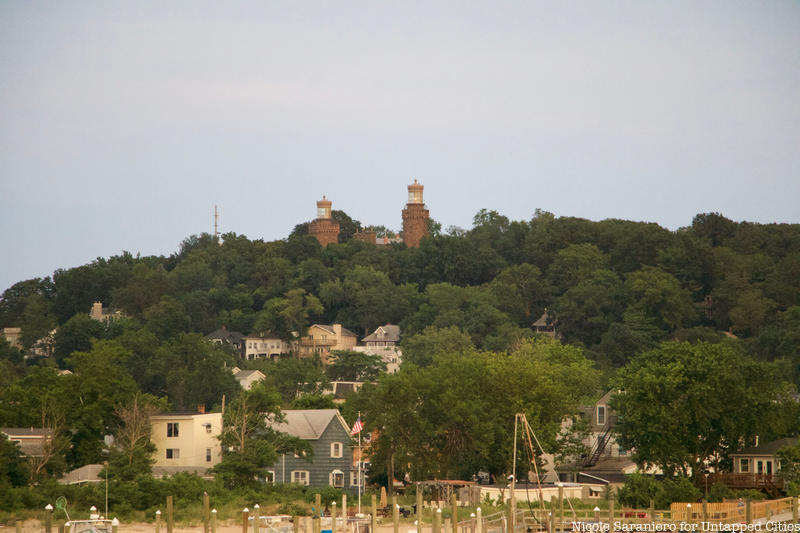7. Navesink Twin Lights Lighthouse

The Navesink Twin Lights are not exactly twins anymore, but they used to be. Situated high in the Navesink Highlands of New Jersey, where you will find some of the tallest peaks along the eastern seaboard, the original twin lights, as they were called by keepers and sailors, looked out over Sandy Hook Bay. Constructed in the 1820s, the identical octagonal towers were made of blue split stone and separated by 320 feet with a wooden house in the middle. In 1841, the twin lights became the first lighthouse lights in America to be outfitted with Fresnel lenses, a special lens created by French physicist Augustin-Jean Fresnel.
By the 1860s, due to poor materials and shoddy workmanship, the lighthouse was in a sad state. Money was approved for improvements to the lighthouse and in 1862 the new Twin Light structure went on duty. The design of the new structure was created by architect Joseph Lederle and inspired by the Smithsonian Castle in Washington, D.C. The castle-like structure is made of brownstone quarried from New Jersey and has two mismatched towers, the tower to the north is octagonal tower and the tower to the south, 228 feet away, is square. They are connected by a two-story residence for the principal keeper and his first assistant and jutting off of each tower on either end there is living space for other assistant keepers, workshops and oil rooms.
The lighthouse, in addition to being historic in the evolution of lighthouses in the country, played host to a number of other historic events and technological breakthroughs. In 1893 the lighthouse hosted the first official reading of the Pledge of Allegiance as America’s national oath of loyalty, an event that coincided with the opening of the World’s Fair in Chicago. The ceremony was held around the lighthouse’s 135-foot Liberty Pole, the first piece of America millions of immigrants saw on their way to Ellis Island in the 19th century. In 1899, the lighthouse witnessed history again when inventor Guglielmo Marconi transmitted wireless messages from a boat offshore to a New York newspaper for publication. Breakthroughs were also made here in radar technology, an innovation which was integral to Allied success in World War II.





